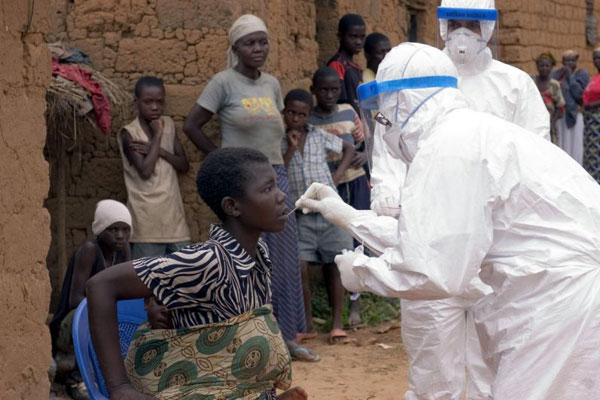The Ministry of Health has said more people continue affected by Marburg outbreak in Kween District, eastern Uganda.
A statement issued by the ministry’s Public Relations Officer Ms Vivian Serwanjja said on Friday that there are currently 4 cases – two confirmed, one suspected and one probable case. The two confirmed and one probable case (all deceased) were residents of Moyok and Kaproron sub counties in Kween District while the suspected case was found in Kaptum sub county, Kapchorwa District.
“The suspect, an 85-year-old man from Kaptum village, Kapchorwa District admitted in the isolation facility in Kapchorwa Hospital presented with fever, vomiting blood and bleeding from the nose. He is currently undergoing supportive treatment at the hospital. He had no known contact history with any of the previously identified cases. A blood sample was taken off for Marburg Virus Disease (MVD) testing and sent to Uganda Virus Research Institute (UVRI) in Entebbe. The total number of contacts line listed currently stands at; 212 from Kween District and 85 from Kapchorwa District. None of the contacts has developed symptoms today. As of this evening, 148 from Kween and 16 contacts from Kapchorwa Districts are under follow up while 64 contacts from Kween and 30 from Kapchorwa Districts had either completed the recommended 21 days follow up after exposure, or are no longer being followed because the case they were exposed to turned out to be negative,” part of the statement from government said.
Marburg hemorrhagic fever is a severe and highly fatal disease caused by the Marburg virus from the Filoviridae family; the same family as the Ebola virus. The virus is among the most deadly known to infect humans. The incubation period is two to 21 days, and symptom onset is sudden and marked by fever, chills, headache, and myalgia.
Although the disease is rare, it can result in large outbreaks with high fatality rates.
The disease is transmitted by direct contact with the blood, body fluids and tissues of infected persons or wild animals, including monkeys and fruit bats.
The World Health Organisation, while confirming the outbreak in eastern Uganda, said it is aware of at least one fatality but hundreds of people may have been exposed to the virus at health facilities and at traditional burial ceremonies in Kween District, a mountainous area 300 kilometres northeast of Kampala.
The first case was detected by the Ministry of Health on October 17, when a 50-year-old woman died at a health centre of fever, bleeding, vomiting and diarrhoea on October 11.
Laboratory tests at the Uganda Virus Research Institute in Entebbe confirmed the cause of death as Marburg.
You can report any suspected cases via the Ministry of Health hotline on 0800-100- 066.
Past outbreaks
2007: Four cases, including two deaths, in Ibanda District, Western Uganda.
2008: Two unrelated cases in travellers returning to the Netherlands and USA, respectively after visiting caves in Western Uganda.
2012: Fifteen cases, including four deaths, in Ibanda and Kabale districts, Western Uganda.
2014: One case of a healthcare professional from Mpigi District, Central Uganda.











